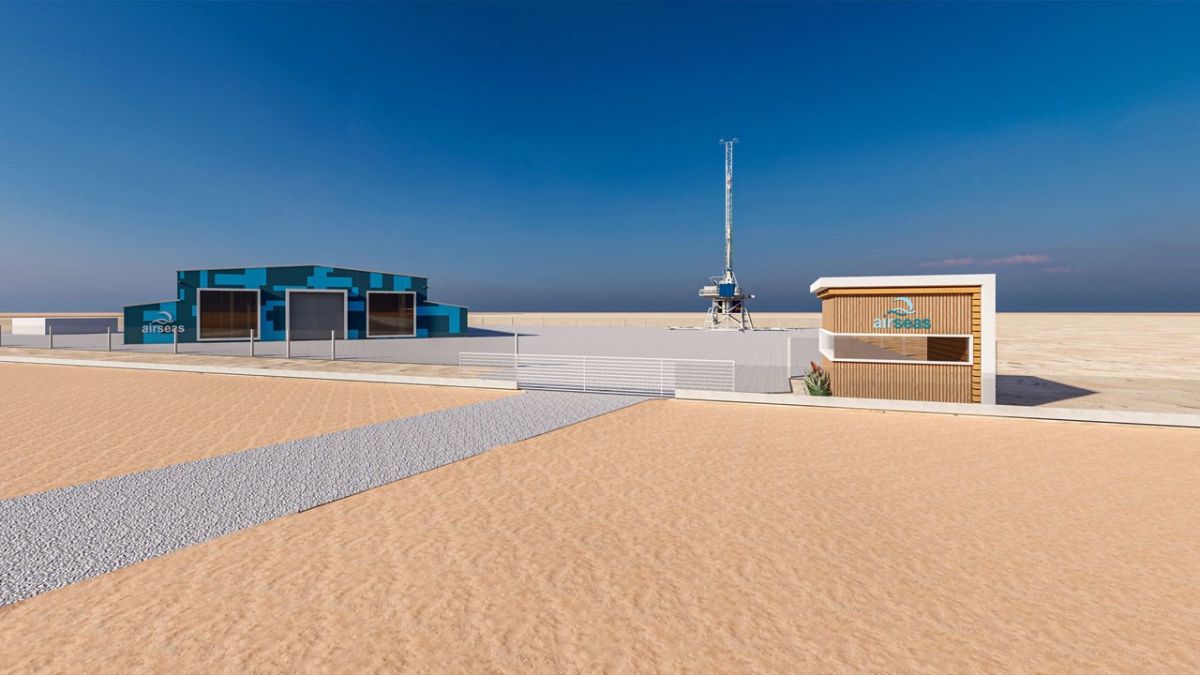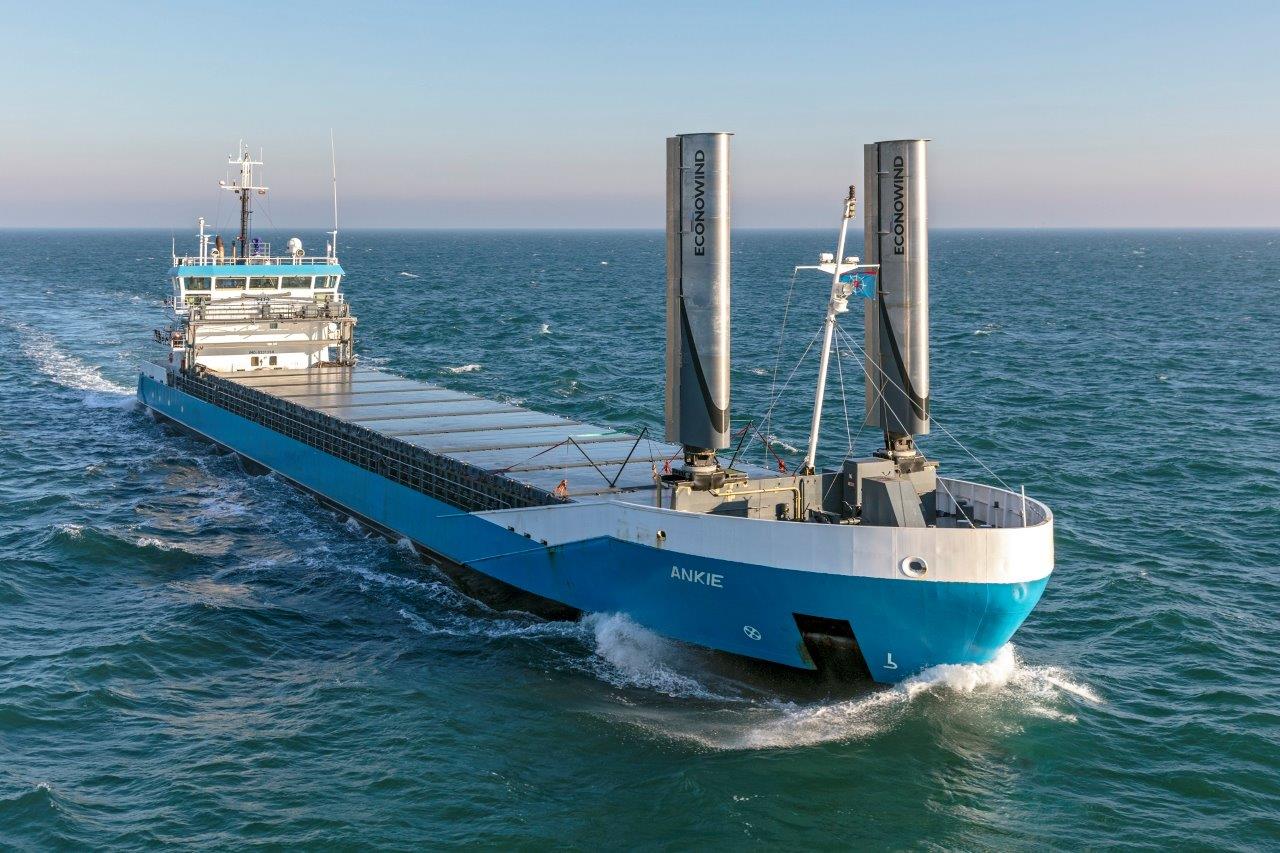Press Release: Mitsui O.S.K. Lines, Ltd. (MOL; President & CEO: Junichiro Ikeda) today announced that it has joined a wide-ranging corporate-academic partnership in a zero-emission initiative called the “Wind Hunter Project,” seeking new applications for hydrogen fuel and wind power. In addition to MOL, the participants include Ouchi Ocean Consultant, Inc., the National Maritime Research Institute (NMRI) of National Institute of Maritime, Port and Aviation Technology (MPAT), Smart Design Co., Ltd., Graduate School of Frontier Sciences of The University of Tokyo, West Japan Fluid Engineering Laboratory Co., Ltd., Nippon Kaiji Kyokai (ClassNK), and Miraihene Planning LLC. The group held its first meeting this month.
The Wind Hunter Project is the ultimate zero emission driving project, which combines wind propulsion sailing technology and wind energy converted to generate a stable supply of hydrogen. The project team aims to give a new and first step to realize a decarbonized and hydrogen society.
MOL is currently working on the “Wind Challenger Project (Note 1)” to develop sailing technology. The Wind Hunter Project applies this sail technology and combines hydrogen carriers and fuel cells with hydrogen generated by electrolyzer which the power is generated by power generation turbine. This combination of sail and hydrogen technology will enable vessels to sail on schedule even in the periods of low wind and the project team plans to study about the application of supplying hydrogen generated at sea for onshore use. Both of these applications are aimed at creating a zero-emission business free of any greenhouse gas (GHG) emissions.
As a first step, the project team will demonstrate feasibility study of such concept using a sailing yacht and verify the function and performance of a series of cycle operations, i.e., turbine power generation, hydrogen generation/storage and fuel cell related propulsion (refer to the conceptual diagram). The next step will be a demonstration using a larger vessel.
One of the measures in the MOL Group Environmental Vision 2.0 is “Deploy commercial ‘Net GHG Zero Emissions’ deep-sea vessels by 2030,” aiming to reduce GHGs in international shipping value chains.
(Note 1)
October 3, 2019 press release:
“Wind Challenger” Design Acquires Preliminary Approval – Realizing Japan’s 1st Large Cargo Ship with ‘Sail’, Aiming at Reduction of GHGs –
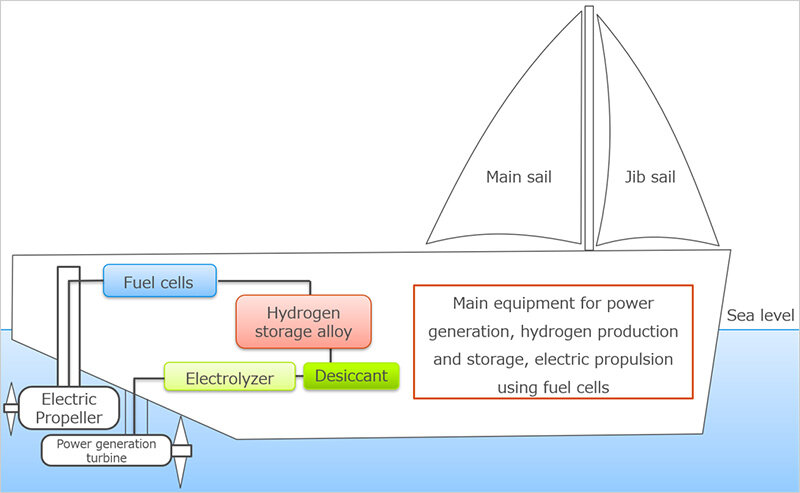
(Planning to integrate propeller and power generation turbine in later stage)
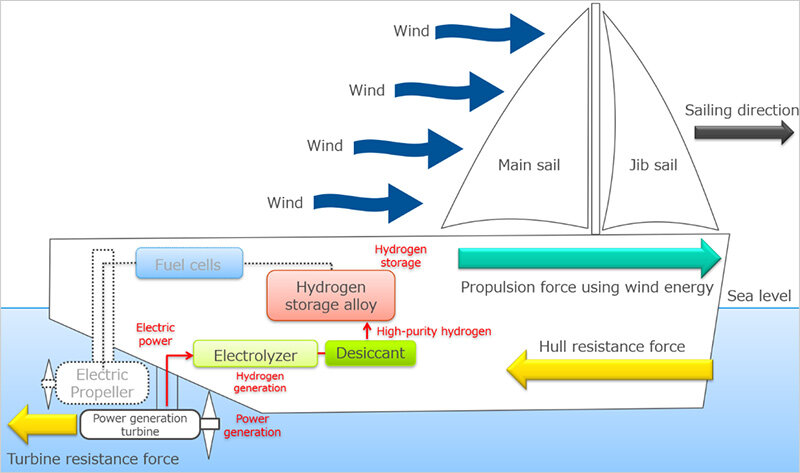
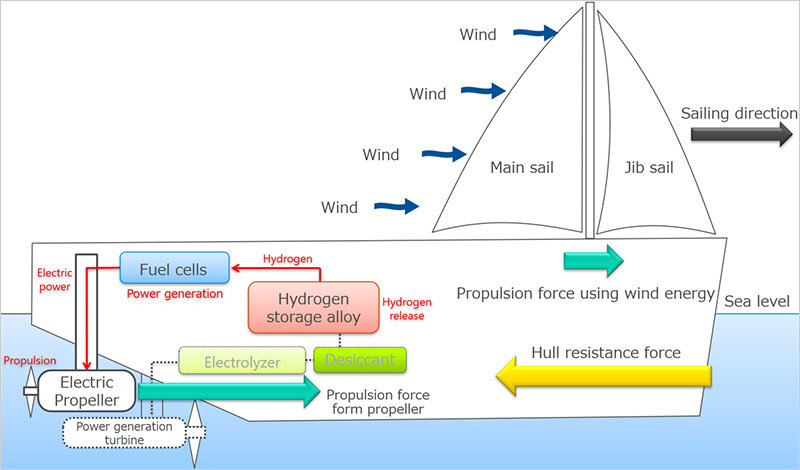
(Note 2)
Power generation turbine: During periods of strong wind, it will produce power by rotating turbines in water, using some of the vessel’s propulsion to generate electric power.
Electrolyzer: Using electric power from power generation turbine, it breaks water into hydrogen and oxygen to obtain hydrogen.
Hydrogen storage alloy: Absorbs hydrogen during periods of strong wind for onboard storage. During periods of low wind, it releases hydrogen to the fuel cells.
Propeller: During periods of low wind, they provide propulsion, using electric power from the fuel cells.






























